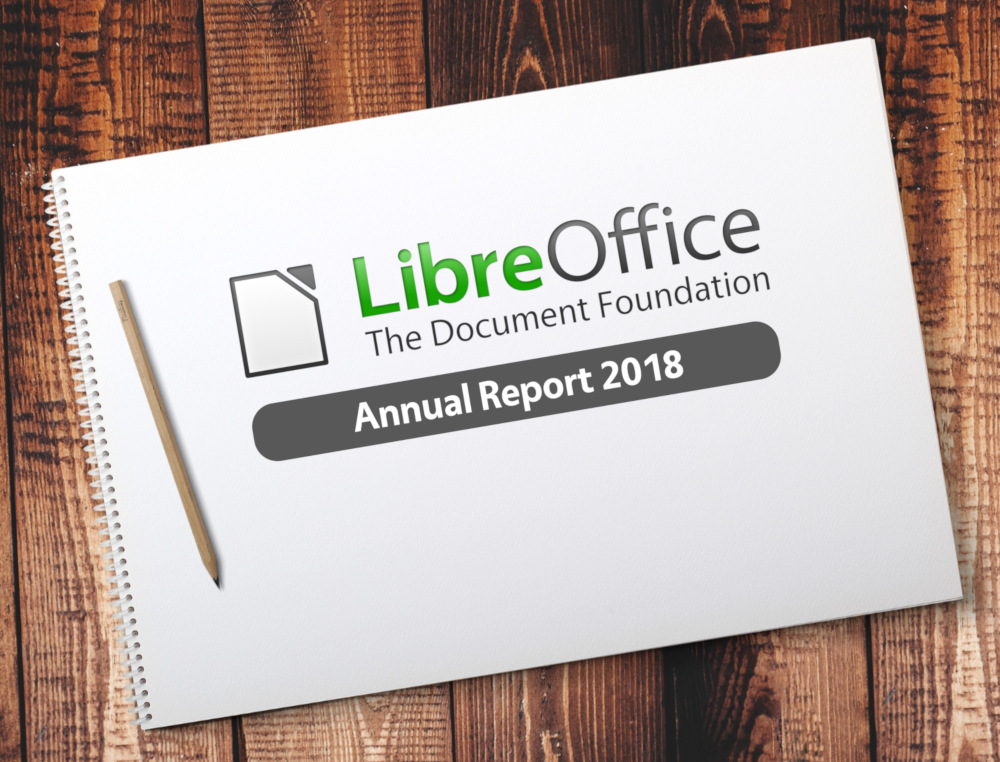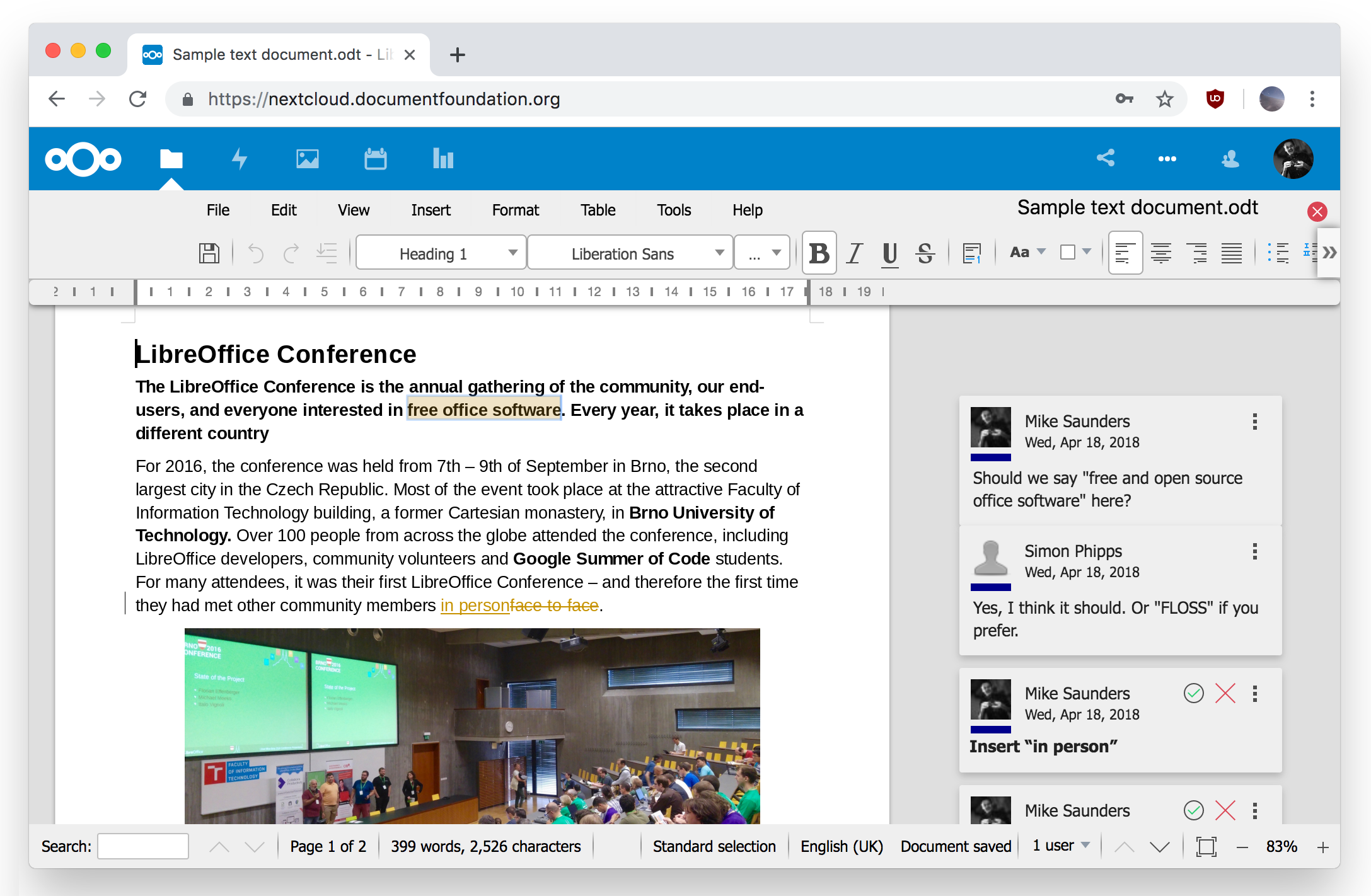
LibreOffice Online is a cloud-based version of the suite that end users can access via a web browser. It uses the same underlying engine as the desktop app, so that documents look identical across the versions. But where did it come from, what happened in 2018, and how can you deploy it on your infrastructure? Read on to find out…
Some History
Development of LibreOffice Online started back in 2011, with the availability of a proof of concept of the client front-end, based on HTML5 technology, produced by SUSE. In 2015, this proof of concept was re-written into an initial Online Development Edition by Collabora, allowing advanced users to check out LibreOffice in the cloud for the very first time.
In 2016, the first source code release of LibreOffice Online, a cloud office suite which provides basic collaborative editing of documents in a browser by re-using LibreOffice desktop’s “core engine”, was added to the master branch for the announcement of LibreOffice 5.3.
This last development brought collaborative editing to LibreOffice Online, a feature which transforms the application into a state of the art cloud office suite – the first to natively support the ISO/IEC standard Open Document Format (ODF) with collaborative editing features.
The rendering fidelity of LibreOffice Online is equivalent to that of the desktop software, and interoperability matches that of LibreOffice thanks to the support of both standard and proprietary document formats. LibreOffice Online has been developed mainly by Collabora, a leading contributor to the LibreOffice codebase and community.
LibreOffice Online in 2018
The main feature in online office suites is collaborative editing, and LibreOffice Online is no exception. The server module, which is key for this feature, is improved with every new major release of LibreOffice, with a focus on performance and security.
The graphical user interface was enhanced with the release of LibreOffice 6.1 by exposing various dialogs in LibreOffice core to the web browser. These dialogs were:
- Writer: Find & Replace, Edit Style, Hyperlink, Special Character, Index Entry, Character, Paragraph, Bullets & Numbering, Table Properties, Spelling & Grammar, Word Count, Change Tracking Management, Insert Header & Footer, and Column Formatting
- Calc: Ability to Add Autofilter, Ability to Filter Items via Autofilter Popup, Format Cell, Sorting Functionality, Support for Hidden Tabs, Support for Chart Data Series Editing, and Data Validation
- Impress: Position & Size, Line and Area
The most significant improvements and new features announced at the time of LibreOffice 6.2 were the following:
- Performance: improvements of scroll wheel, zooming, disk space, session and cache management, reduction of latency and unnecessary animation, and avoidance of repeated re-layout of comments & red-lines
- Mobile: simplification of user interface, improvement of on-screen keyboard and cursor handling, addition of context toolbar and cleaning of other toolbars, and improvements to comment rendering
- Integration: insertion of remote graphic from integration, addition of configurable time-limit for document conversion, installation of sample webserver config snippets, and addition of hosting/capabilities endpoint to list online features
- Document signing: integration of Vereign compatible authentication and document signature, new LibreOfficeKit signing and certificate APIs, configuration to enable/disable the signature, and addition of a signing infobar
- Other features: opening PDF files in a new tab instead of downloading them, improving configuration options for track changes, addition of a new shape insertion toolbar and of missing configuration defaults, and cleaner and more attractive 404 error reporting
LibreOffice Online Positioning
LibreOffice Online is server software which – to be fully functional – must be integrated with a service that provides file storage and authentication. As such, it can be considered an enabling technology for the public cloud of ISPs, or the private cloud of enterprises and large organizations, when it is integrated – for example – with enterprise file sync and sharing software, or a groupware solution.
The Document Foundation does not plan to develop or deploy a public cloud solution similar to existing products from Google and Microsoft, because this would not be in line with the original mission of the project. The task is therefore open to ISPs and providers of open source cloud solutions, with many options already available on the market.
Given the mission-critical nature of LibreOffice Online, The Document Foundation will not be maintaining binaries for enterprises, because this would create expectations which could not be fulfilled by volunteer-based support. However, builds of the latest code, suitable for home users and those who wish to contribute to development – which is encouraged – are available as Docker images.

